#european prehistory
Text

shell necklace made of river mussels
stroked pottery culture, 4800-4400 BC
found in Šárka, Czech Republic
#neolithic#prehistory#stone age#artefact#archaeology#jewellery#stroked pottery culture#czech republic#archeology#my upl#central europe#european prehistory
276 notes
·
View notes
Text
And so, as prehistoric excavations evidence, the archaeological landscape of Old Europe is transformed. Not only do we find increasing signs of physical destruction and cultural regression in the wake of each wave of invasions; the direction of cultural history is also profoundly altered.
Slowly, as the Old Europeans, for the most part unsuccessfully, try to protect themselves from their barbaric invaders, new definitions of what is normal for both society and ideology begin to emerge. Everywhere now we see the shift in social priorities that is like an arrow shot through time to pierce our age with its nuclear tip: the shift toward more effective technologies of destruction. This is accompanied by a fundamental ideological shift. The power to dominate and destroy through the sharp blade gradually supplants the view of power as the capacity to support and nurture life. For not only was the evolution of the earlier partnership civilizations truncated by armed conquests; those societies that were not simply wiped out were now also radically changed.
Now everywhere the men with the greatest power to destroy—the physically strongest, most insensitive, most brutal—rise to the top, as everywhere the social structure becomes more hierarchic and authoritarian. Women—who as a group are physically smaller and weaker than men, and who are most closely identified with the old view of power symbolized by the life-giving and sustaining chalice—are now gradually reduced to the status they are to hold hereafter: male-controlled technologies of production and reproduction.
-Riane Eisler, The Chalice and the Blade: Our History, Our Future
6 notes
·
View notes
Photo




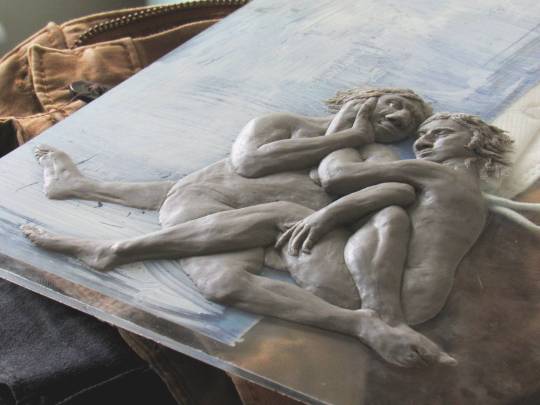

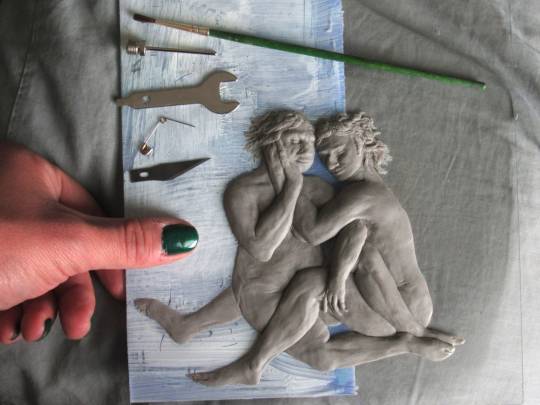
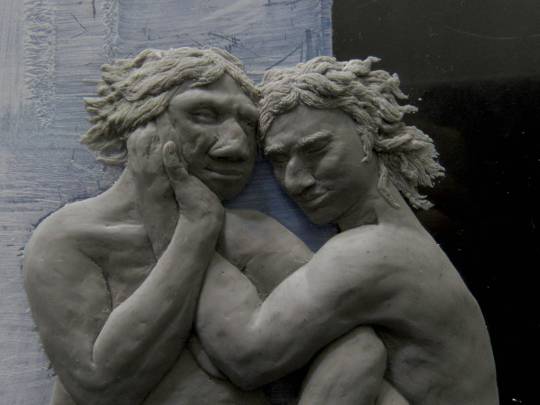
I started this only weeks ago, but I've been wanting to render this subject for some years now; a Neanderthal woman and Anatomically Modern Human woman seated and comfortably tangled up together, similar *and* dissimilar in many ways, but above all else very much in love.
At some point this is meant to be one painting in a triptych depicting this couple and their lives together in Paleolithic Europe, but for now it takes the form of a very tiny high-relief sculpture made of clay on scrap plexiglass, lacking the environment or props that the later painting will feature.
Traditional sculpture (high-relief, medium Super Sculpey on plexiglass)
2022
#Homo neanderthalensis#Homo s. sapiens (EEMH)#clay sculpture#super sculpey#plexiglass mount#high-relief sculpture#hominids#human evolution#European prehistory#private lives of prehistoric people#lesbian couple#H.sapiens/H.neanderthalensis coexistence#paleoart#paleosculpture#paleoanthropology art#I'm so glad these two are finally rendered in a presentable way#they've existed as just sketches and mental notes since like 2019#good for them#teeeechnically painting prep?#still very much a standalone piece in its own right#2022#Christopher Maida Artwork
40 notes
·
View notes
Text

Walk at Dusk (Man Contemplating a Megalith) by Caspar David Friedrich
Possibly a self-portrait
#caspar david friedrich#art#romantic#landscape#romanticism#megalith#megalithic#megaliths#stone#monument#prehistoric#prehistory#europe#european#nature#self portrait#portrait#allegorical#allegory#crescent moon#moon
721 notes
·
View notes
Photo
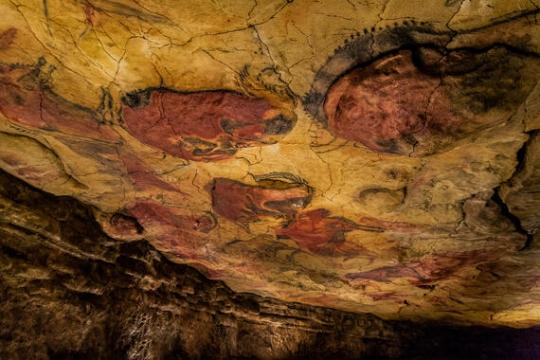
“It has been well said that mythology is the penultimate truth--penultimate because the ultimate cannot be put into words. It is beyond words. Beyond images [...]. Mythology pitches the mind beyond that rim, to what can be known but not told”.
- Joseph Campbell.
*The cave of Altamira.
#Joseph Campbell#Myth#Mythology#Altamira#Jung#Carl Jung#collective unconscious#archetypes#dreams#shadow#hero#ego#Europe#paleolithic#prehistory#solutren#European Early Modern Humans#REligion#Religiosity#pre-indoeuropean#European tradition#Eternal values#Salutreans#Animism#solutrean#solutreans
179 notes
·
View notes
Text
Wonderful Cultural map I found while doing some research that I thought might be helpful to others
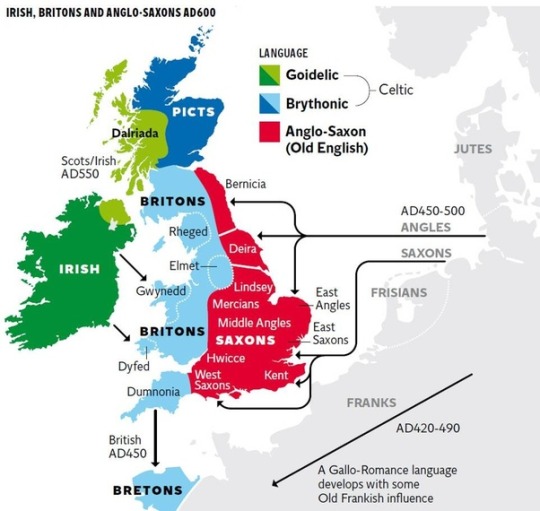
#irish mythology#irish#irish paganism#irish polytheism#celtic#celtic paganism#celtic polytheism#ierland#UK#united kingdom#british isles#AD 600#prehistory#maps#map#european history
128 notes
·
View notes
Text

We have been finger painting since the beginning!
👧🏻🦣👶🏽
#history#cave art#rouffignac cave#france#finger fluting#art history#ice age#little space#childhood#prehistoire#european history#toddlercore#finger painting#baby girl#kidcore#art#baby things#mammoth#little space community#prehistory#babycore#cave#france history#archeology#nickys facts
6 notes
·
View notes
Text
Study suggests Steppe Origin of Etruscans
A study has just been published regarding the genetic origins of the ancient Etruscans. They were a people of Antiquity who inhabited the region north of Latium, where Rome was founded by a Latin tribe. Before the rise of Rome, they were arguably the most powerful, most influential, and culturally and technologically advanced people on the Italian peninsula, perhaps only rivaled by the Greeks in…

View On WordPress
3 notes
·
View notes
Text
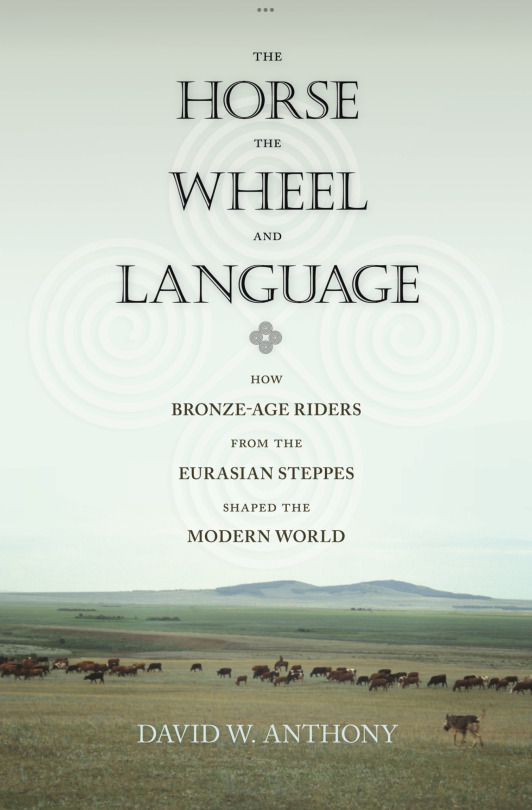
This looks so cool! I’m starting it today after an historian friend told me a bunch of juicy Bronze Age linguistics gossip.
24 notes
·
View notes
Text
from perkunos to indra & zeus
Anatolian languages:
tarhuan, tarhunna, tarhunnaradu - hittite (linked w bull in anatolia)
tarhu, tarhunz, tarhunta, tarhuwant - luwian
tarhuwanta - palaic
trqqas - lycian
taru - hattian
teshub - hurrian
turvant - sanskrit cognate for indra?
aleppo -
hadad - mesopotamia?
iskur - sumeria?
zeus - greek
indra - vedic
trokondas - rome
jupiter dolichenus - armenian/roman
- associated with sky, weather, lightning, thunder, battlefield, commander, mountains, helpful, slaying enemies with an axe, vanquishing, decided whether would be drought and famine or fertile fields and good harvests, thunderbolt becomes axe
religious treatment
- "Weather god of the thunderbolt, glow on me like the moonlight, shine over me like the son god of heaven!" - KUB 6.45 iii 68-70, Hittite king Muwatalli II’s personal god who he referred to as “my lord, king of heaven” (associated with Anatolia’s bulls instead of horses)
- Hittite king Warpalawas II made rock relief and animals were sacrificed to him
- Luwian magic rituals intended to bring rain or heal the sick
- chief god of the luwians, whose chariot was pulled by horses. later depicted standing on a bull.
- cows + sheep were sacrificed to him for grain + wine to grow
- in curses, he was called upon to “smash enemies with his axe” and gave the king royal power, courage and marched him in battle - in late Luwian texts
- Pegasus, Greek winged horse which carries Zeus’ thunderbolt name comes from one of his epithets piḫaššašši meaning “of the thunderblot”
cult sites
- Aleppo, Syria, major city of the weather god - conquered by Hittite king Suppiluluima I who installed his son Telipinu as priest-king. Temple for weather god was modified to conform to Hittite cult
snake/dragon slayer myth near Mount Kasios in Syria & Corycus in Turkey
- Illuyanka in Hittite
- Hedammu in Hurrian
- Typhon in Greek (taken from Cilicia)
- Naga in Sanskrit
#weather god#zeus#indra#taru#tarhunta#mythology#prehistory#syria#anatolia#india#south asia#levant#archaeology#comparisons#indo european#greek#luwian#anatolian#aleppo#hittite#hurrian#hatti#compare
4 notes
·
View notes
Text
khatti (ancient Hittites of present-day Syria)
= kshatriya (warrior caste)/ khatri caste of punjab
not a coincidence that the first Sanskrit inscriptions were found in that region:
“the Hittites were never enemies in the Hebrew texts; in the Book of Kings, they supplied the Israelites with cedar, chariots, and horses, and in the Book of Genesis were friends and allies to Abraham” (wassup Brahma etc)
#india#south asia#punjab#kshatriya#warrior#caste#casteism#khatri#syria#hittite#ancient history#prehistory#pre history#sanskrit#vedic#aryan#indo european#brahmin#hindutva#jew#jewish#juda#israel#hebrew#abraham#brahma
3 notes
·
View notes
Text

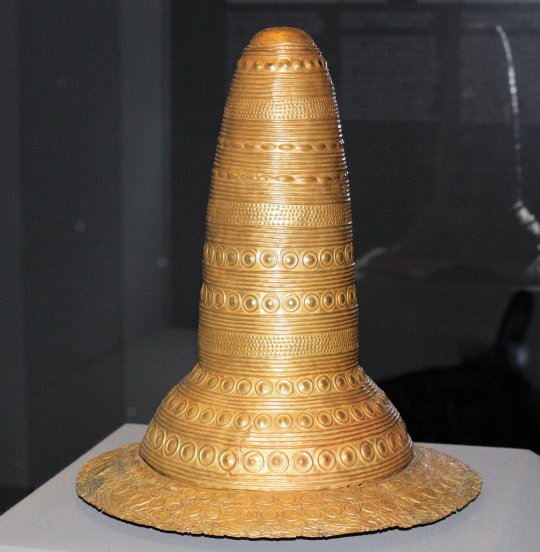
#parallels#yemeni women herders#yemeni female goat herders#early bronze age golden hat#yemen#goldhut#artefact#headdress#european prehistory#bronze age#Schifferstadt#my upl#archaeology
23 notes
·
View notes
Text
“The popular concept of the primitive family group, complete with domineering father, cowed and submissive mother, and tumbling human cubs littering the cave-home floor, has been completely discredited; yet it remains the image of ‘caveman’ life as portrayed in the widely disseminated media of comic strip and television serial today.
The fact is that the earliest human family consisted of a woman and her children. ‘The patriarchal family was entirely unknown,’ writes Lewis Henry Morgan. ‘It was not until after recorded civilization commenced that it became established.’ Fatherhood and the idea of permanent mating were very late comers in human history. So late, as a matter of fact, is the idea of paternity that the word for father does not even exist in the original Indo-European language, as the philologist Roland Kent points out.
The Encyclopaedia Britannica (1964 edition) says that where no word existed in the ancient Indo-European language for any concept or object, it may be accepted as a truism that that concept or object was unknown to the Indo-Europeans. And since this original language did not break up into the classical and modern languages that have descended from it, according to Kent, until about 3000 B.C., it seems obvious that fatherhood was unknown even as recently as five thousand years ago.”
-Elizabeth Gould Davis, The First Sex
765 notes
·
View notes
Photo
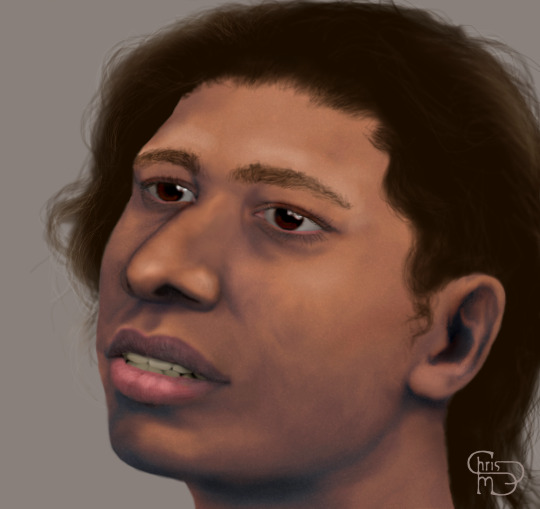
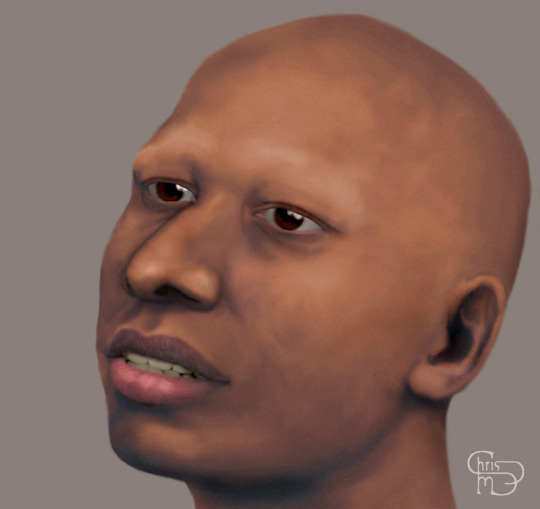


A reconstruction of the skull found at the French rock shelter of Abri Pataud, belonging to a late teenage girl who lived and died about 20,600 years ago. Digitally painted in Photopea, over the skull photographed by wikigraphist Sémhur. 2022
#facial reconstruction#French prehistory#Early European Modern Humans#Anatomically Modern Humans#Abri Pataud#paleoanthropology#life restoration of skull#fossil reconstruction#digital painting#Photopea#credit to original photographer#digitally painted portrait#Christopher Maida Artwork
11 notes
·
View notes
Text
tfw u get tricked into taking a western civ class
#its supposed to be survey of euro history#prehistory to uh 1400 or somethign#tfw i wanted to take it specifically to learn more about european prehistory#tfw it starts in mesopotamia#truly i will do my utmost to destroy the idea of western culture in my lifetime
2 notes
·
View notes
Text

"You know, people ask me how I could be interested in pagan, Teutonic cultures, and I tell them I cannot help myself—voices sing to me. I tell them there might be something we can learn from them.”
- John Milius.
#john milius#robert e howard#conan#conan the barbarian#cimmerian#crom#oliver stone#the savage sword of conan#savage#teutonic#german tribes#paganism#thulsa doom#tradition#europe#european culture#prehistory#barbarian#hyborian#zamora#cult#snake cult#hybotiqn agr#cimmeria#basil poledouris
57 notes
·
View notes